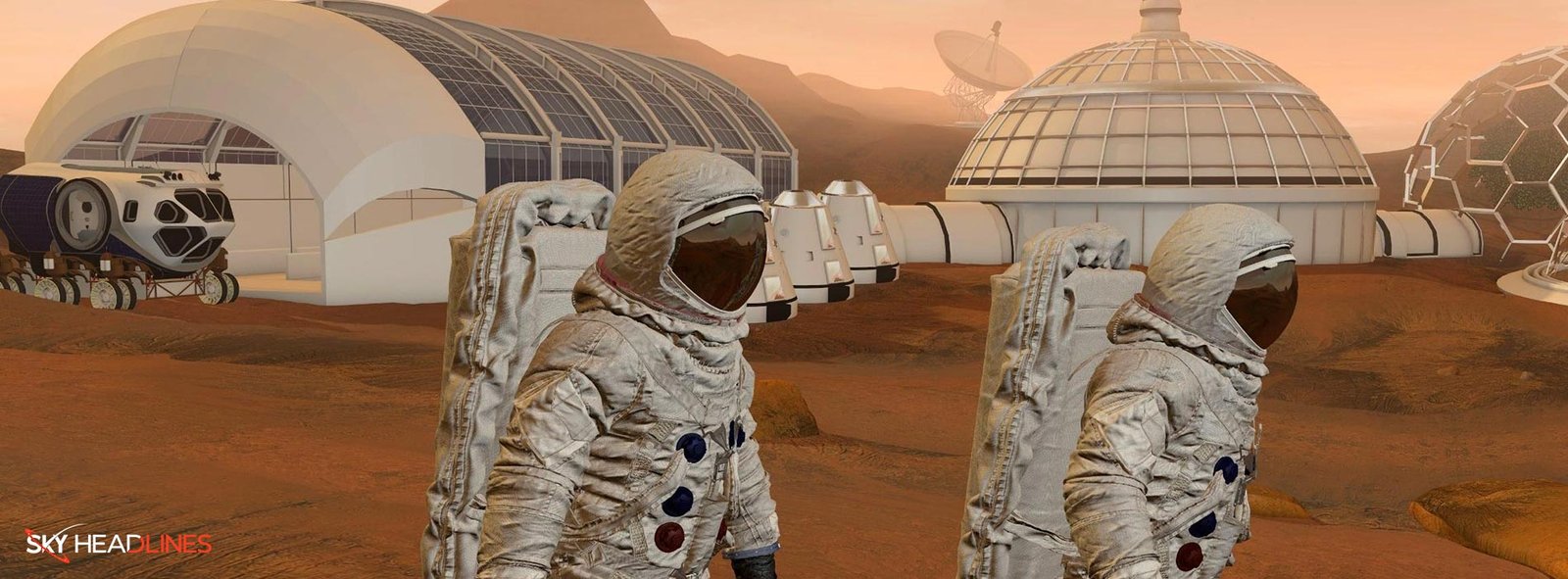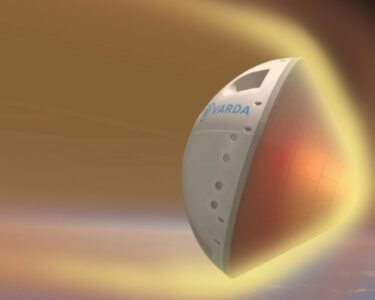Humans continue to tackle the technological obstacles of deep space missions, which involve Mars colony too. So, the idea of exploring and establishing colonies on extraterrestrial outposts is being seriously discussed by space agencies and private companies.
However, we need to consider whether we should pursue these endeavors solely because we have the capability to do so. Is venturing into this undoubtedly risky adventure justified when we assess it from economic, legal, and ethical perspectives?
Human Colorization on Mars Colony- A Pathway to Level up the Evolution Process
Mars possesses a significant advantage over the Moon in terms of its abundance and diversity of essential elements. While the Moon lacks many crucial metals and elements required by industrial society, Mars has a wide range of elements in abundance, making it more promising for potential resource extraction and utilization.
On Mars, various hydrologic and volcanic processes have occurred over its geologic history, leading to the consolidation of different elements into local concentrations of high-grade mineral ore. This geological history has drawn optimistic comparisons to Africa’s mineral wealth, suggesting that Mars may have substantial mineral resources. Which would help in developing Mars colony.
In contrast, the Moon has had limited to no history of water or volcanic activity. As a result, its composition primarily consists of rocks with little differentiation into valuable ores or concentrations of essential elements.
Considering the available resources and mineral wealth. Mars colony appears to be a more attractive candidate for potential future human colonization and resource utilization endeavors if we compare it to the Moon.
Now, we will see the robotic mining, and its significance in digging out important elements from Mars Colony.
What is Robotic Mining & How it Could Help in Mars Colony?
According to Professor Serkan Saydam from UNSW Sydney:
“The key to developing a colony on Mars within the next 30 years lies in robotic mining. This technology can extract water and fuel, making it essential for future colonization efforts.”
Professor Saydam believes that if autonomous mining processes become more commercially viable, humans could establish a colony on Mars by the year 2050. The recent successful landing of NASA’s Perseverance rover on Mars has sparked hope for this endeavor.
The primary focus of creating a colony on Mars revolves around finding and utilizing water. Robots will play a crucial role in extracting and processing water before humans set foot on the planet. Water is vital for life support, and it can also be separated into hydrogen, which serves as an energy source.
The proposed process for human colonization on Mars involves first setting up robotic operations to produce water and separate hydrogen. This way, the water and energy will be ready and available when human beings eventually arrive on the red planet.
Advancements in robotics and autonomous systems are crucial to ensure the availability of water and energy for future Mars colonization missions.
The Entrepreneur , Elon Musk, has recently made a claim regarding the colony of Mars. Let’s read in next paragraph what he is telling us!
Mars Will be the City of 1 Million by 2050: Elon Musk Claimed!
Entrepreneur Elon Musk has expressed confidence in the possibility of establishing a city of 1 million people on Mars by 2050. He plans to transport these individuals using 1000 Starships developed by his company, SpaceX, with up to three rocket launches per day.
While Professor Saydam believes achieving this specific goal within the given timeframe may be unrealistic, he acknowledges that the ambition to travel to and potentially Mars colony is what will drive the necessary technological advancements.
According to Professor Saydam:
“The technology and knowledge required for such missions are already available. However, the main challenge lies in maintaining focus and commitment to the project. To further the progress, he asks why similar technologies are not already utilized on Earth, where we still heavily rely on human labor in mining operations.”
One crucial aspect hindering the development is the lack of sufficient demand. Companies would only invest in Mars mission-related products if there is a market for the minerals or resources they can extract from Mars, which can be used for manufacturing and sold.
“At the moment, everything is just a cost and there is no revenue for companies.“
However, that could be starting to change. United Launch Alliance, a joint venture between Lockheed Martin and Boeing who are heavily invested in the rockets used to launch spaceships, has publicly announced they will pay $500 per kilogram for fuel – derived from water – supplied on the moon. That rises to $3000 per kilogram if the fuel is available in a low-earth orbit.
Apart from this, now we will see the civilization of Mars, and the challenges it could lead in the next part of the blog!
Developing a Civilization on Mars:
When NASA plans crewed missions to Mars, they usually envision round trips with brief stopovers on the Red Planet. However, commercial space companies like SpaceX have more ambitious goals, aiming to establish civilizations on Mars.
For extended stays on Mars, the most practical approach involves utilizing resources already present on the planet, rather than relying solely on supplies from Earth. Researchers have identified five essential resources that would be required for Martian settlements in Mars colony: energy, water, oxygen, construction material, and food. Fortunately, the first four resources are potentially abundant on Mars.
Energy needs can be met with a combination of solar power and nuclear-fission reactors. Water can be sourced from ice and hydrated minerals found on Mars. Oxygen can be generated by converting carbon dioxide, which is also present in the Martian atmosphere. Additionally, the soil on Mars can be used to produce bricks for construction materials.
However, when it comes to food, there are no natural sources available on Mars, and it’s challenging to create it from the raw materials on the planet using simple chemical processes. The researchers emphasize that producing food locally on Mars will be the most difficult task, and importing all the required food from Earth won’t be sustainable for establishing a self-sufficient settlement.
Long-term stays on Mars require a strategy that relies on Martian resources for energy, water, oxygen, and construction material. However, the challenge of producing food locally remains a significant obstacle for establishing a self-sustaining colony on the Red Planet.
As we all know that Mars has lower gravity than Earth, so we will highlight the importance of “survival of the fittest” in next paragraph.
Does “Survival of the Fittest” Really Fits Best in Mars Colony?
The concept of “survival of the fittest” is essential in evolution, but on Mars, the environment may not solely determine the traits that make people well-suited for life there. One apparent factor that could lead to differences is height, as Mars has lower gravity than Earth.
Contrary to popular science fiction portrayals of tall and lanky Martians, the actual effect might be the opposite. The conditions on Mars could favor shorter people with denser bones to avoid hazards during childbirth, as weaker skeletons could lead to pelvic fractures during delivery.
Additionally, Mars’ high radiation levels could influence traits like skin color or eyesight over generations of evolution, as has happened on Earth. For example, to cope with the radiation, humans might develop new types of skin pigments or genes that make them more resistant to cancer, leading to potential “green men” in the future.
However, it’s crucial to remember that these ideas are speculative. There is still much we need to learn about how space living, including childbirth and infant survival and development, may impact human evolution on Mars. The process is complex and will require further research and understanding.

What Could be the Possible Future Impacts on Mars Colony?
Mars presents a unique opportunity for potential colonization due to several factors. With a mean radius of about 0.53 times that of Earth and 0.38 times the surface gravity, it offers a surface area close to the total land area of our planet, making it a promising destination. These are really valuable information related to Mars colony.
Research conducted by rovers and low-frequency radar on the Mars Express spacecraft. They have suggested the possibility of finding underground and subglacial liquid water. Which would be beneficial for sustaining life and supporting future colonists.
Similar to Earth, we believe that Mars have substantial mineral resources beneath its surface. And it includes recently confirmed evidence of metal ores and other vital minerals. While no practical methods for extracting and refining these resources on Mars have been demonstrated yet. The potential to do so in the future is a significant factor in favor of colonization.
Despite immediate challenges such as a dusty, carbon dioxide-rich atmosphere with a pressure of only 0.09 atm. These promising features have solidified Mars’ status as the ultimate space colonization destination for the near future.

How Being Extra-Terrestrial on Mars Effects Science?
The idea of going extra-terrestrial and colonizing Mars is gaining momentum with initiatives like the Mars One program. Which has been operating since 2012 and seems likely to continue due to financial and public support. The successful launch of Falcon Heavy in 2018 demonstrated its capacity to deliver payloads to the Martian surface. Which aligns with the goals of Mars One.
To develop geodynamic scenarios and define relevant parameters for future Mars, efforts are ongoing. And it also include terraforming such as Mars colony, as well as materials suitable for Mars-oriented applications and environments.
Many believe that from a technological standpoint, colonization of Mars within our lifetime is indeed possible. There is a substantial number of volunteers eager. That will take on the challenge of a one-way journey to the Red Planet. Thousands have applied to Mars One, and around 100 individuals have been preselected.
These developments and the enthusiastic response from potential volunteers indicate many things. Which also include that the concept of colonizing Mars is becoming a tangible reality, at least from a technical perspective. However, it is essential to continue research and planning to address the significant challenges involved in such a monumental endeavor.





